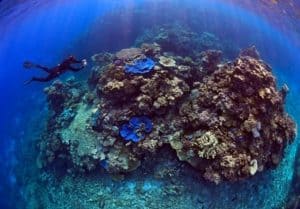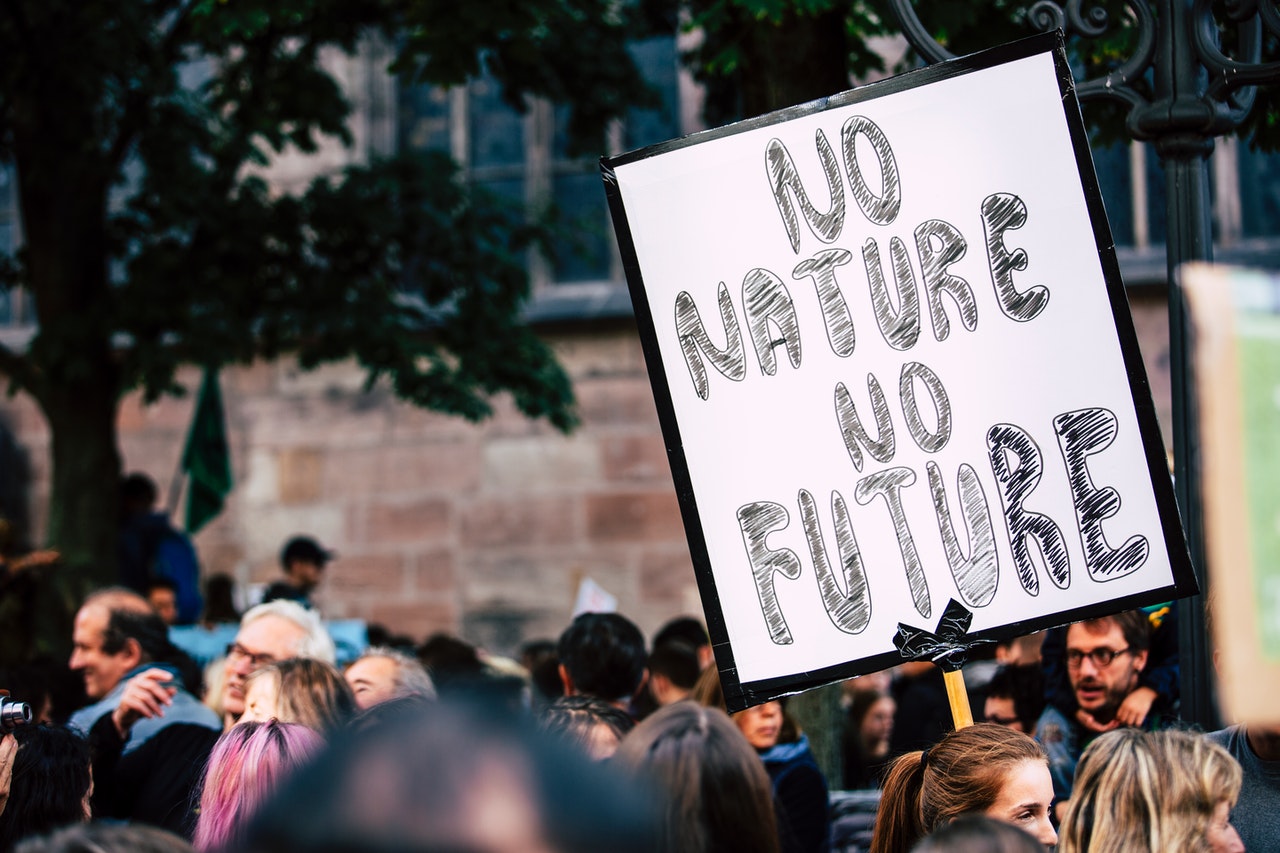How can we truly mobilise the masses into practical action? What is happening to our reefs around the world, are they already dead? Why is apathy a big threat to the conversation movement? We speak to Andy Ridley, Founding CEO at Citizens of the Great Barrier Reef and Co-founder of Earth Hour, both global efforts to scale modern conversation.
In 2019 I was invited to go to the Arctic Circle on an expedition coupled with climate leadership training with Sir Robert Swan, the first man to traverse both the north and south pole. On that trip were change-makers from around the world, including Andy Ridley. I was instantly fascinated with his stories of growing global movements and his big ideas to protect the Great Barrier Reef. Not to mention he was an excellent conversationalist and charismatic storyteller.
Andy was the Director of Communications for WWF in Australia, and the co-founder and founding CEO of the global movement of Earth Hour. He spent eight years growing the award-winning Earth Hour campaign from the concept (and inaugural event in Sydney) to the largest mass participation movement in history, engaging hundreds of millions of people in more than 7000 cities on every continent. He is now is the CEO of Citizens of the Great Barrier Reef, a network engaging and inspiring people, organisations & industry to drive positive action for the Reef.
We spoke to Andy Ridley on the Live Wide Awake podcast (click to listen) and shared a few key highlights here. We deep dive into what 21st-century conversation looks like, why if humanity accelerates its efforts around climate change there is significant reason for hope and why our reefs are so critical to all of life on earth.

On founding Earth Hour…
Back in 2005/2006 in Australia, there was a bit of a split personality in the country around the topic of climate change with a lot of sceptics. The fear argument which we had been using from a conservation perspective was very de-motivating. So the need for hope not fear was an important one. Initially, we thought how can we make lights be a symbol of participation? And the original idea was that we were going to run a slightly negative campaign around those who weren’t turning the lights off. But we turned the campaign into one which was much more about hope. And it really did bring this idea of people power to the centre.
For that first Earth Hour, we got enough people behind the idea to try it in Sydney. We stood on the side of Sydney Harbor in 2007 waiting for eight o’clock, with a lot of cameras, and it was kind of one of those moments where we thought “if this doesn’t work, it’s gonna be quite humiliating”. But come the hour, the lights started to go off one by one; these big logos in the sky went off, then the buildings started turning off, and then the famous Sydney Harbor bridge turned off and then the Opera House turned off. And we looked out across this incredibly beautiful Sydney Harbor, there was a bit of moon and some clouds, with sort of the Batman-esque vibe, it was a wild experience.
A couple of days later, the city of Toronto rang us up and said, “We want to do Earth Hour in a month.” And we said, “Oh, it took us a long while to get this organized. Why don’t you announce yourself as the first city to join Sydney in doing it in 2008?” So that’s what happened. In 2008 there were about 390 cities taking part. And then in 2009, there was nearly 5,000 who took part and then it just kept growing.
On 21st century conservation…
The scale of conservation required globally is much greater than what is currently being provided. And the model of conservation is still stuck in the 20th-century. It’s very much about big organisation asking for money and then saying that they will help you help fix the problem. What was interesting about Earth Hour that it showed that you could mobilise billions of people with a common purpose was simple and clear enough. So with Citizens (of the Great Barrier Reef), we started to look at what does a 21st-century conservation organisation look like? How do we build a fundamentally different way of approaching scalability? We found the shared economy model is a more interesting way of looking at it, in other words, how can you mobilize all available assets, whether they belong to you or not. And most of the time they won’t belong to you in order to achieve significant outcomes, which is the underpinning of Citizens. Citizens being the keyword, whether you’re a corporate citizen or an individual citizen, you have rights and responsibilities and we are tapping into that.
We started looking at different projects that we might be able to add value to, but fundamentally we were looking for other people who shared our common purpose and values. We focused on doing really practical stuff, specifically what’s happening in the water. The priority was using sharing economy for assets to create open-sourced information to make the biggest impact. The biggest thing we started to do was a project called the Great Reef Census, which brought scalable evidence to our theory.
On taking practical action to save the reefs…
The bleaching of the Great Barrier Reef in 2016 and 2017 had the world walking away thinking that the reef was dead. And one thing we realised was that 40% of it had never been surveyed. And it’s really big. The Great Barrier Reef is the same size as Germany and would run the length from Seattle to Mexico, or 2,300 kilometres long. Of all the Marine species that live on the planet, a third of them will spend a part of their life on reefs. Reef systems are incredibly important and are really under threat from the climate. Billions of people around the world rely on the reef for survival. So you don’t just need hope. You also need also practical action.
Normally to get an accurate picture of what’s happening on the reef it occurs through modelling. Out of the 4,000 reefs within the Great Barrier Reef, we identified about 150 that were first priority. Many of them are very, very far away. So we applied the Earth Hour methodology and utilised as many boats as we could from different places, including tugs, superyachts, dive boats, tourism boats, recreational boats, sailing boats, to help us map the reefs with cameras. By the end of 2020, we had reached over 150 reefs, borrowing time and effort from a bunch of amazing people (dive instructors to tug captains to film crews) to get the surveys done. It is highly scalable and the biggest photo-driven survey of the biggest marine ecosystem on the planet. And we are going to open-source everything so that other places around the world can do the same thing.
https://www.instagram.com/p/CK6HyhdHA5K/
On why this is the decisive decade…
We are in the decade where if humanity accelerates is efforts around climate change, there is significant reason for hope. We’ll lose a lot, but nature is extremely resilient. We are faced with the opportunity and the challenge to turn things around. If you can build things that can be mimicked, if you can approach conservation with a 21st-century mindset, then I think we can make a significant difference. Getting into the net zeros by 2040, as opposed to 2050, is completely possible. Because once you get on the right path, things will happen much quicker than we can imagine at the moment. It’s a bit like in the 90s when the internet started, you wouldn’t have imagined that would be a where we are now. Change can happen really rapidly.
One of the silver linings of 2020 was witnessing the capacity for humankind to move very quickly to deal with problems if they so desire. People are the key and will mobilise behind a common purpose. The world has embraced the capacity to have conversations globally and locally using technology. There have been many parts to this last year, but I hope it has reminded us of our ability to change when required. The challenge of course with climate is that it never feels urgent in the way that Corona did. However, if we were to compare dealing with climate change and dealing with corona, it would be easier if you had the same level of motivation, with not many years and a lot less pain. The good thing is, there are so many people out there that actually want to do something, and they bring joy to it. And you see that joy, of being part of something, that common purpose, and it creates unity.
A call to action (that’s you!)…
To date, we’ve got more than 10,000 images of the Great Barrier Reef. And on the 16th of February 2021, we will be switching onto the next part of the Great Reef Census, which requires the help of people, wherever you are, to help us analyze those images. You don’t need to be a reef expert or a scientist, you just need to be able to look at a screen and give us a bit of your time. When the image comes up, you are asked to do a quick analysis of the image and that’s it. It’s helping us to train the machine learning, but it’s also helping us to create a group of citizen scientists that can help with more and more projects. Which is where the whole idea of the shared economy and shared responsibility in the role of a citizen.
Three things I am taking away from this conversation with Andy…
1. Joy and laugher are a really important part for the longevity of the fight and motivation.
2. We don’t just need hope, we need practical action.
3. People are the key and will mobilise being a common purpose.
Listen to the whole conversation with Andy Ridley on the Live Wide Awake podcast.
Image credit: Anna Rogers


